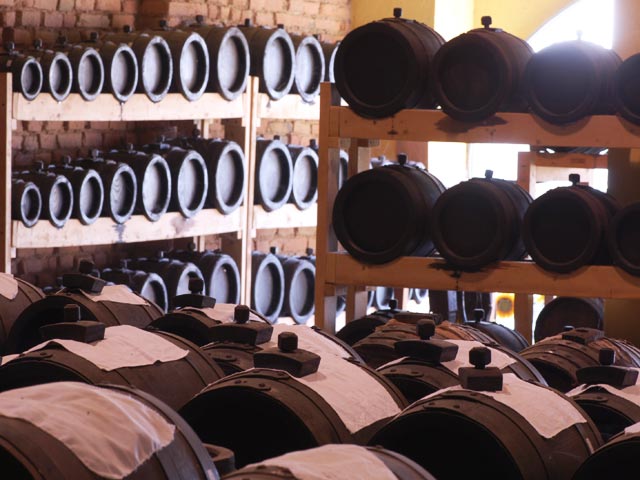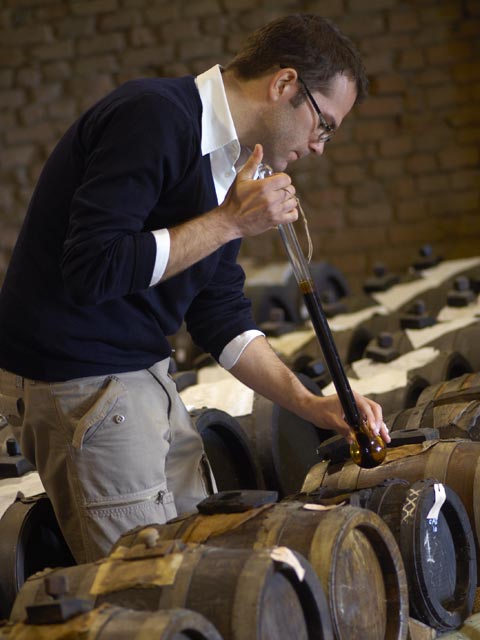Driving through the disorienting January fog along the narrow, winding roads of Reggio Emilia, we were grateful to have a guide. Andrea Bezzecchi had picked us up from the Reggio Emilia train station and was taking us to Novellara, his hometown and the home of Acetaia San Giacomo, where his family has made balsamic vinegar for 45 years.

The Reggio Emilia area, along with nearby Modena, is the seat of Italy's balsamic vinegar tradition. But these towns, situated along the banks of the Po River, are known for much more. As we drove, Andrea (On-DRAY-a) pointed out buildings where enormous wheels of Parmigiano-Reggiano, one of the world's most famous cheeses, are made, and vineyards full of Lambrusco grapevines, which are used to produce the region's signature fizzy red wine.

Andrea had just returned from a trip to Barcelona where he met with chefs from the world-famous restaurant El Bulli, which recently began to use his vinegar. After a quick stop for espresso, he brought us to the acetaia, an old farmhouse overlooking more vineyards and guarded by a pack of house cats. Once inside, we were hit by the unmistakable sweet and rich aroma of balsamic vinegar. Every year, this vinegar begins as Lambrusco grape must, Andrea explained -- freshly-pressed juice that still contains the grapes' skins, stems and seeds. The quality of the raw materials is key, he added, because it determines how the vinegar will develop.
Andrea makes much of his vinegar according to 'tradizionale' methods, meaning that it undergoes a lengthy oxidation and aging process. Over the span of at least 12 years, the vinegar is moved through a 'battery' of barrels - each one fashioned out of a different type of wood, such as cherry, juniper or oak -- where it slowly becomes more concentrated and complex. In addition to their Red, Silver and Gold graded tradizionale balsamics, Andrea produces wonderful and less expensive 'condimento' or 'essenza,' balsamics by removing the vinegars from their barrels earlier. While these vinegars may lack the viscosity and complexity of their more developed siblings, they offer beautiful 'agro dolce' or sweet and sour flavor that is the hallmark of a good balsamic.
(To read more about how balsamic vinegar is made, click here. For Formaggio Kitchen's selection of Acetaia San Giacomo vinegars, click here.)

In the world of balsamic, time is not the only factor in producing a top-notch vinegar. 'Even if the product is old, this doesn't mean the product is good,' said Andrea, who took over the acetaia 13 years ago after deciding not to pursue a law career.
Twice every month, a local committee gathers to taste the region's balsamic vinegars and decide whether they can bear the label 'tradizionale.' Andrea poured us a few drops of a vinegar that he estimated had been aged for about 20 years. It was thick like melted chocolate, and had a balanced acidity, rich fruit flavors and complex undertones of caramel and wood. It would rank highly when the committee tasted it, Andrea predicted. It was hard for us to argue.
Post script: the vinegar we tasted was reviewed by the consortium and was given the highest grading possible.

